If you have landed on this page, it’s most likely you have encountered the error message This app does not support the contract specified or is not installed when opening or performing any app-related tasks on your Windows 11 or Windows 10 PC. This post provides the most suitable fixes to successfully resolve this issue on your system.
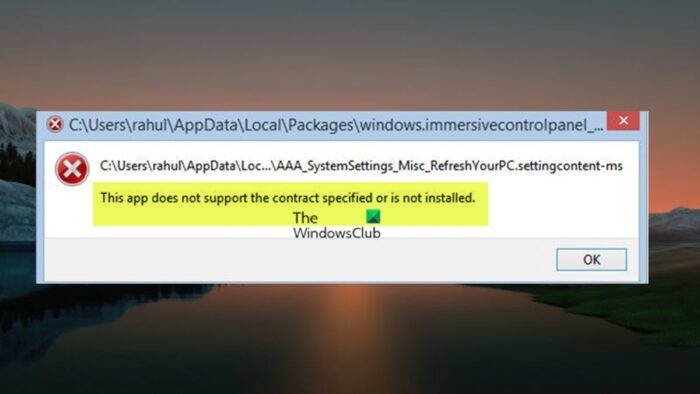
This app does not support the contract specified or is not installed
If when you try to open or while performing any other app-related tasks on your Windows 11/10 PC and you get an error prompt stating that This app does not support the contract specified or is not installed, then you can apply our recommended solutions below in no particular order and see if you can have the issue resolved on your device.
- Run Windows Store Apps Troubleshooter
- Run SFC and DISM scan
- Update Windows and Microsoft Store apps
- Create a new User Account
- Re-register/Reinstall the problematic app
Let’s look at the description of the process as it relates to each of the listed solutions.
1] Run Windows Store Apps Troubleshooter
Your first step in your attempt to troubleshoot and fix This app does not support the contract specified or is not installed error that appears on your Windows 11/10 device is to run the Windows Store Apps Troubleshooter and see if that helps.
To run Windows Store Apps Troubleshooter on your Windows 11 device, do the following:
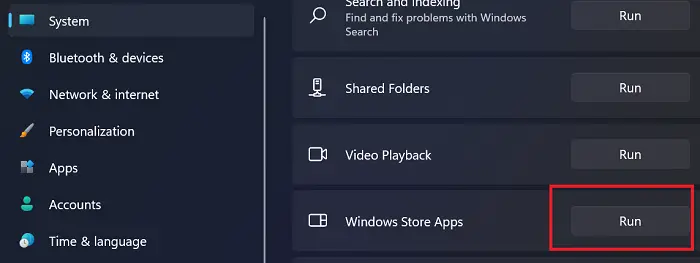
- Press the Windows key + I to open the Settings app.
- Navigate to System > Troubleshoot > Other troubleshooters.
- Under the Other section, find Windows Store Apps.
- Click the Run button.
- Follow on-screen instructions and apply any recommended fixes.
To run the Windows Store Apps Troubleshooter on your Windows 10 PC, do the following:
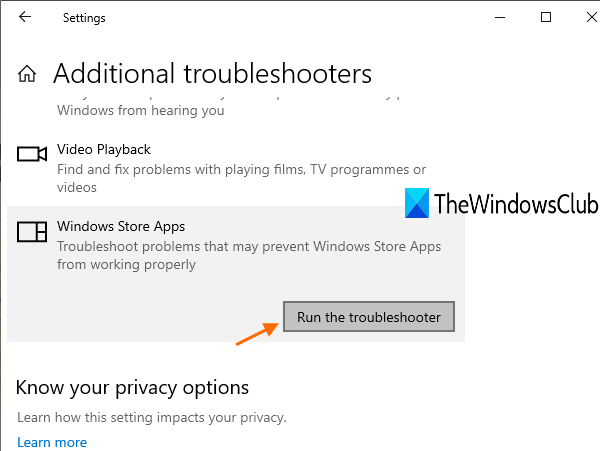
- Press the Windows key + I to open the Settings app.
- Go to Update and Security.
- Click the Troubleshooter tab.
- Scroll down and click on Windows Store Apps.
- Click the Run the troubleshooter button.
- Follow on-screen instructions and apply any recommended fixes.
While there are several ways to fix problems with apps, the Windows Store Apps Troubleshooter which is native to Windows 11/10, is designed to automatically scan and fix any issues that may prevent apps you acquired in the Store from working properly.
Read: There’s a problem with this app – Microsoft Store app error
2] Run SFC and DISM scan
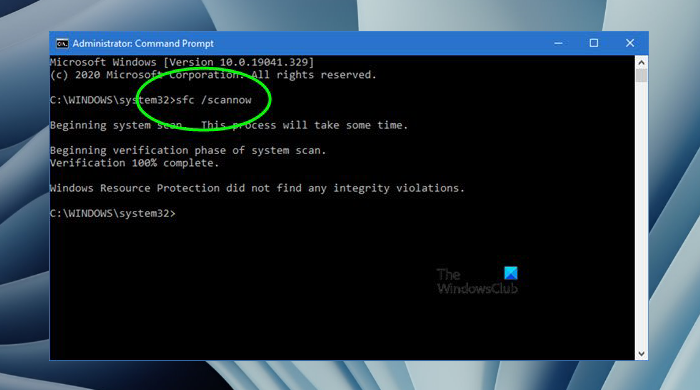
This solution requires you to repair system files using the SFC/DISM scan commands. To perform this task, do the following:
- Press the Windows key + R to invoke the Run dialog.
- In the Run dialog box, type cmd and then press CTRL + SHIFT + ENTER to open Command Prompt in admin/elevated mode.
- In the command prompt window, type the command below and hit Enter.
DISM.exe /Online /Cleanup-image /Restorehealth
- Wait for the operation to complete first, and then type or copy and paste the command below and hit Enter:
sfc /scannow
- Exit CMD prompt once the operation completes.
- Restart your computer.
After you run these scans, and indeed there were corrupted system files, you should see the following message:
Windows Resource Protection found corrupt files and successfully repaired them, Details are included in the CBS.Log %WinDir%\Logs\CBS\CBS.log
But if the following message is displayed:
Windows Resource Protection found corrupt files but was unable to fix some of them, Details are included in the CBS.Log %WinDir%\Logs\CBS\CBS.log
You can run the command below:
findstr /c:"[SR]" %windir%\Logs\CBS\CBS.log >"%userprofile%\Desktop\sfclogs.txt"
This command will open up the logs on your Desktop, and then you can manually look up files causing this error on your computer and take any necessary action.
Read: How to fix Corrupted System Files in Windows 11/10
3] Update Windows and Microsoft Store apps
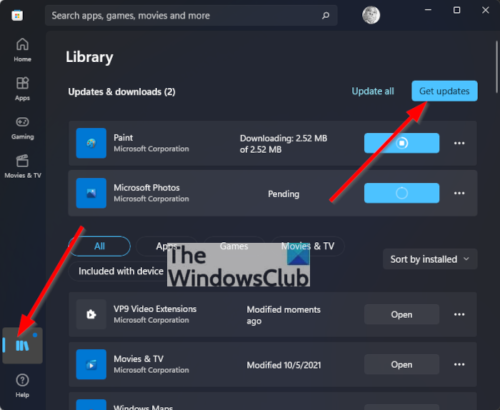
A software update (also known as a patch) for the OS or app, is a set of changes to the software to update, fix or improve it. Changes to the software will usually either fix bugs, fix security vulnerabilities, provide new features or improve performance and usability.
This solution requires you to ensure Windows is updated to the latest build. You can do this by checking for updates and installing any available bits on your Windows 11/10 device. Similarly, you need to also manually check for Microsoft Store App updates. Normally, Microsoft Store apps will update automatically, but if for some reason, perhaps, an automatic update for Microsoft Store apps is turned off, and Microsoft Store apps are not updating automatically, then in this case, you’ll have to perform a manual update.
Read: How to update Microsoft Store Apps without an Internet connection
4] Create a new User Account
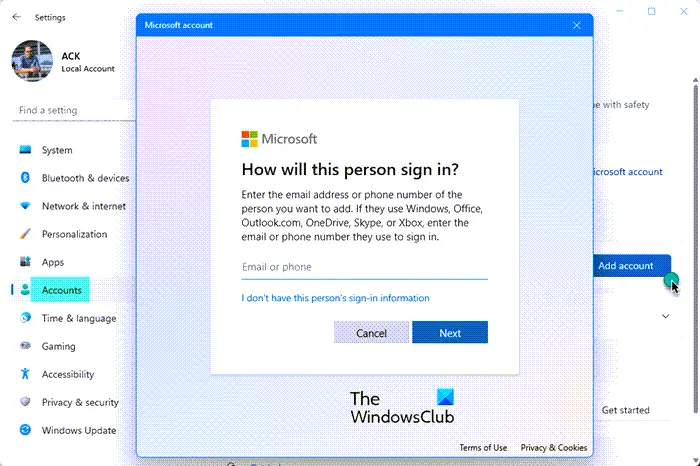
Due to an abnormal or unexpected shutdown of your Windows 11/10 device, the user application cache C:\Users\<username>\AppData\Local\Packages may have been corrupted. In this case, to test if you have the issue, you need to create a new user account and sign into the new account. If the issue doesn’t reoccur, you can repair the corrupt user profile and see if the issue is resolved or recreate your user profile to resolve the problem.
Do the following:
-
Back up the user profile data files on the old user account:
-
In the Folder Options dialog, in the View tab, look under Advanced settings, and set the following settings:
- Show hidden files, folders, and drives button needs to be selected.
- Hide extensions for known file types needs to be unchecked.
- Hide protected operating system files (Recommended) needs to be unchecked.
-
In File Explorer, locate the
C:\Users\Old_Usernamefolder, where C is the drive that Windows is installed on, and Old_Username is the name of the profile you want to back up. -
Select and copy all of the files and folders in this folder, except for the following files:
- NtUser.dat
- NtUser.ini
- NtUser.log (or if it does not exist, instead exclude the two log files called ntuser.dat.log1 and ntuser.dat.log2)
-
Paste the files to a backup location of your choosing. You can retrieve your old user account profile from this backup location if needed – but keep in mind that the files that were under
C:\Users\<Old_Username>\AppData\Local\Packageswere likely corrupted, and there may be other files corrupted as well.
-
Sign out of the old user account. If you have e‑mail messages in an e‑mail program, you must import your e‑mail messages and addresses and transfer your files/data to the new user profile before you delete the old profile. If everything is working properly, you can delete the old account/profile.
Read: Windows is creating Multiple Accounts automatically
5] Re-register/Reinstall the problematic app
This solution requires you to first re-register the problematic Microsoft Store app. If re-registering the app didn’t resolve the issue, you can then proceed to uninstall the app and then install the latest version of the app on your device. But as reported by some affected users, and from every indication on the error message which however isn’t the case here knowing the app was installed on your system, the app in question might not be listed in Apps & features (or the Uninstall button for the app is greyed out) in Settings app or Programs and Features applet in Control Panel. In this case, you can follow the instructions in this guide for how to uninstall Programs not listed in Control Panel OR you can try and see if you can uninstall the app via the Windows Registry Editor. Whichever uninstall method that works for you, once done, visit Microsoft Store to download and install the app again.
In the unlikely event, that nothing worked and the issue you’re currently facing is still unresolved, you can reset Windows with the option to Keep personal files. Once the reset is complete, you can reinstall all the apps you need.
Read: How to uninstall Pre-Installed Microsoft Store Apps
I hope this post helps you!
Also read:
- MS-settings:display file does not have an app associated with it
- Deployment failed HRESULT 0x80073cf6, Package could not be registered
How do I fix Microsoft Store not installing apps?
To fix problems with apps from Microsoft Store on your device, see these suggestions:
- Make sure Windows is up to date. Select Start > Settings > Windows Update > Check for updates.
- Make sure that your app works with Windows 11.
- Update Microsoft Store.
- Troubleshoot games.
- Repair or reset your apps.
- Reinstall your apps.
Read: Microsoft Store apps not downloading, installing or updating
How do I fix Microsoft Store this app is not compatible with this device?
To fix this issue on your Windows 11/10 device, you can try the following suggestions:
- Delete Windows Update cache files.
- Make sure that you have the latest updates installed.
- Search for the application in Microsoft Store.
- Reinstall the app.
- Reset the Microsoft Store.
- Reset the app.
- Run the Windows Store Apps Troubleshooter.
Read: Uninstall this app now because it isn’t compatible with Windows
Why this app is not available for your device?
The most common explanation for why you can’t download certain apps from Google Play is that the app’s developers have marked it as “incompatible” with your device. You’ll see a message stating “this app is not available for your device” or “this app is not available for any of your devices” in this case.
Read: Delete other apps; This drive has apps from another device
What do I do if I can’t download Apps from Play Store?
The following are basic troubleshooting steps you can take to resolve the issue on your Android device:
- Check that you have a strong Wi-Fi or mobile data connection.
- Check your storage space.
- Check for Android system updates.
- Check if the app is available for your device.
- Uninstall & reinstall the app.
- Close & reopen the Play Store.
- Uninstall & reinstall Play Store updates.
- Restart your device.